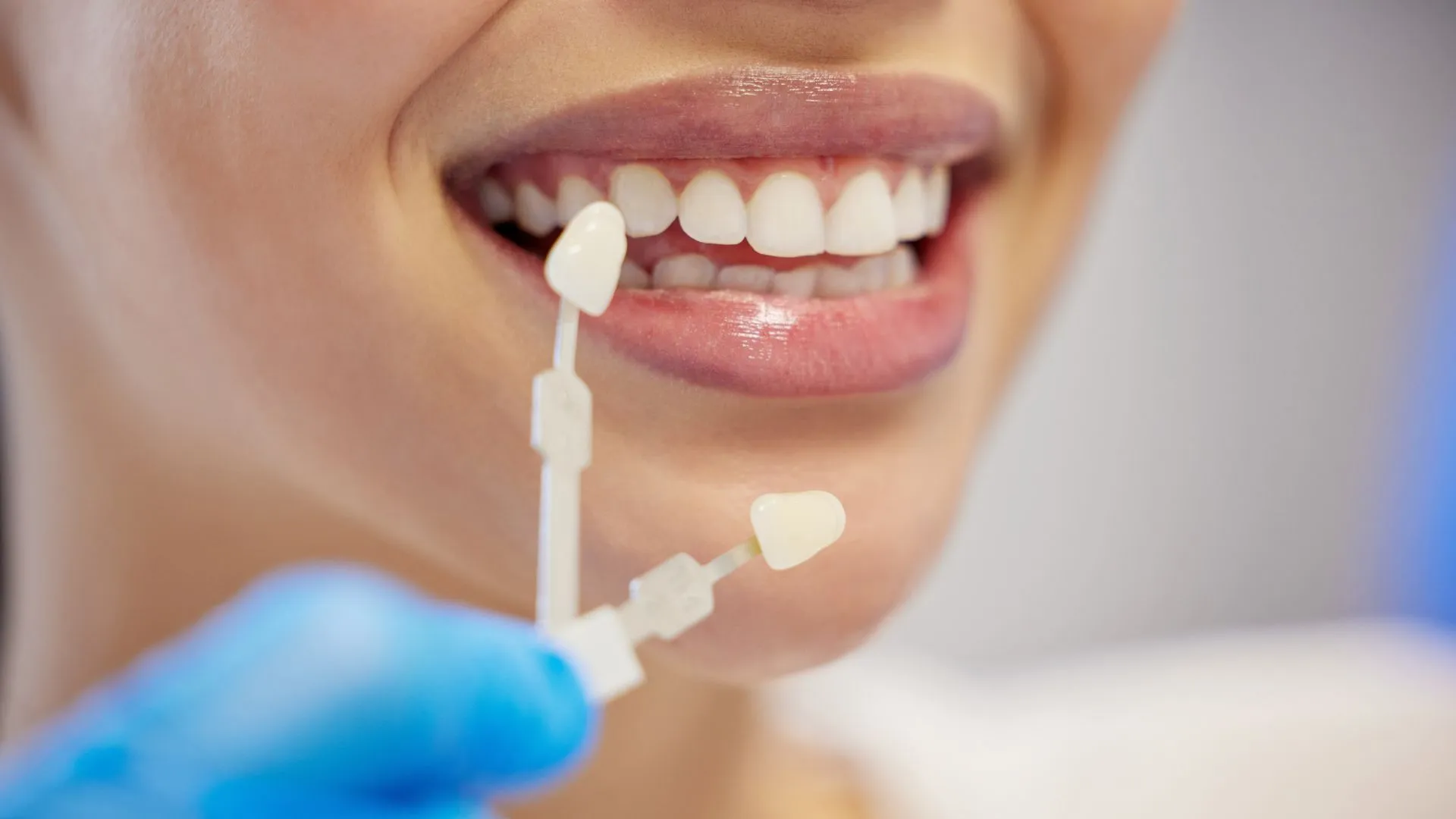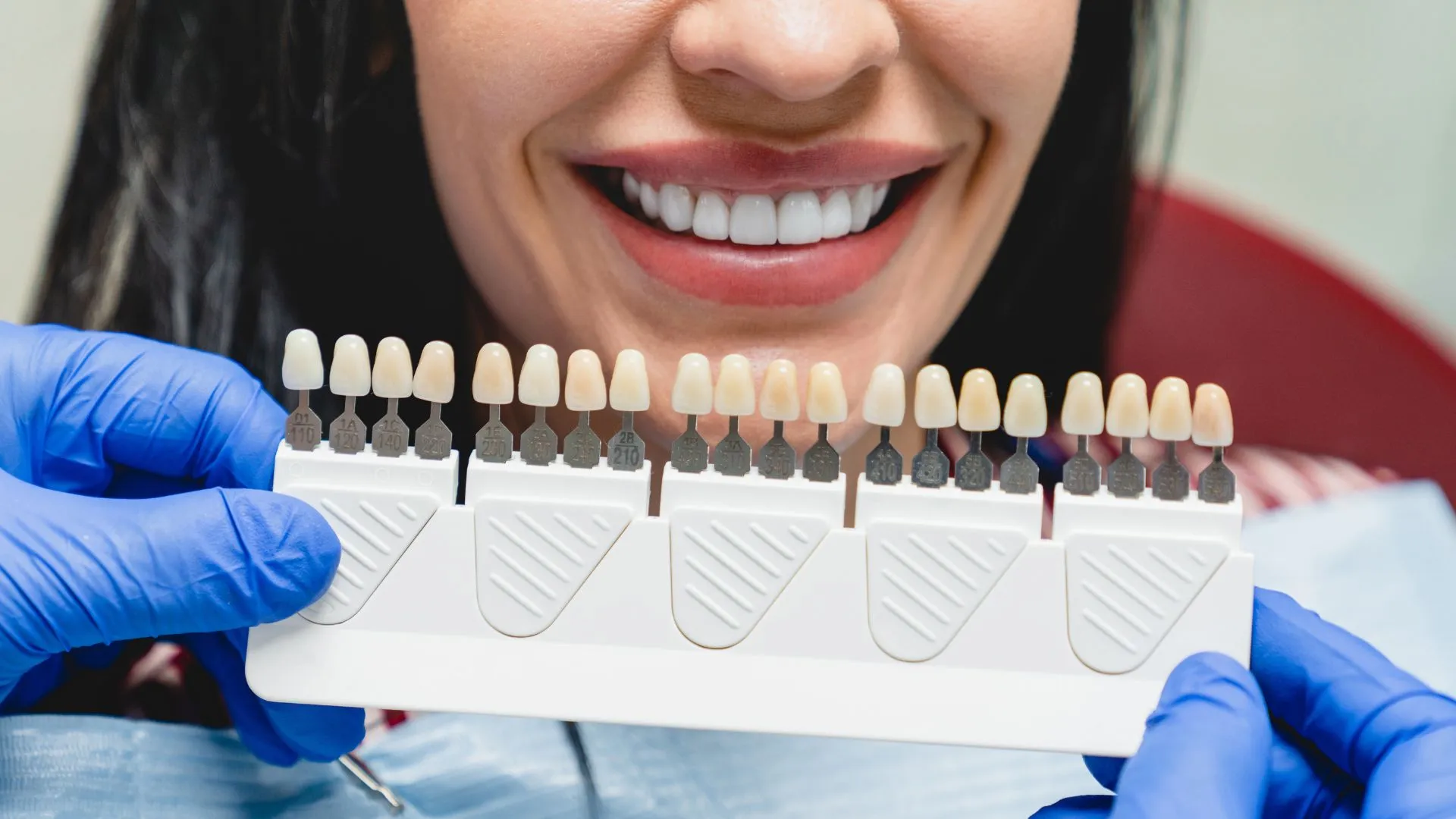If you only have minor cosmetic issues with your teeth, porcelain veneers might be the right option for you! Veneers help to fix issues such as tooth discoloration, gapped teeth, and other small issues related to the appearance of your smile.
If you only have minor cosmetic issues with your teeth, porcelain veneers might be the right option for you! Veneers help to fix issues such as tooth discoloration, gapped teeth, and other small issues related to the appearance of your smile. Not only does cosmetic dental treatment using veneers improve your smile, but it can also aid in enhancing your abilities to eat and speak more comfortably.
When comparing porcelain veneers to other similar options like dental bridges or composite bonding, it might be overwhelming trying to navigate which option is best for you. However, Image Dental seeks to educate patients more on the process behind crafting porcelain veneers, why they are needed, and their cost to provide you with a better understanding of all the options available to help you improve your smile. For more, continue reading down below.

One major benefit of using porcelain veneers is that they look very similar to your natural teeth. They also fit comfortably on top of the front part of your teeth, so no one will suspect when you smile that your teeth look fake or like they’re about to fall out.
Aspen Dental explains in further detail how veneers work a few of the more common issues experienced by patients who are candidates for porcelain veneers:
What are veneers?
“If you want to improve your smile, dental veneers are a simple option. Veneers are thin coverings that are placed over the front (visible) part of the tooth. They look like natural teeth. Veneers can be used to correct a wide range of dental issues, such as:
- teeth that are stained and can’t be whitened by bleaching
- chipped or worn teeth
- crooked or misshapen teeth
- uneven spaces or a large gap between the upper front teeth
Veneers are made of either porcelain or composite resin material. Your dentist will help you choose the material that is best for you. Each type of veneer has its own benefits.”
Something that a lot of patients tend to appreciate about porcelain veneers is it’s a less invasive cosmetic dental procedure that doesn’t involve surgery or anesthesia. Avi B. Gibberman, DDS discusses what to expect when getting your porcelain veneers as well as the steps you and your dentists will take together to complete this process.
It’s crucial to consult with your dental health adviser to determine if veneers are the right options for you because they will have greater expertise and be able to offer further insight on whether veneers offer you the solutions you’re looking for. For example, if you suffer from gapped teeth that are severely spread apart, you might benefit more from braces or Invisalign® treatment than getting veneers.
Explore the benefits of porcelain veneers
“Getting veneers usually requires two visits to complete the process, with little or no anesthesia required during the procedure. The teeth are prepared by lightly buffing and shaping the surface to allow for the thickness of the veneer. A mold or impression of the teeth is taken and a shade (color) will then be chosen by you and the dentist.
On the second visit, the teeth will be cleansed with special liquids to achieve a durable bond. Bonding cement is then placed between the tooth and veneer and a special light beam is used to harden and set the bond. You will receive care instructions for veneers. Proper brushing, flossing and regular dental visits will aid in the life of your new veneers.”
Another major thing to consider when weighing your options is comparing the price of each treatment. Cost is a huge factor in any life decision, so knowing what to plan for financially can help eliminate some options for you and you can even think ahead by working with your dental clinic to come up with a financial plan for funding your treatment.
A lot of practices will offer many different payment options including insurance coverage, online payment, or installment payments to help you get the treatment that’s right for you without having to empty your wallet all at once.
Authority Dental discusses the cost of porcelain veneers in the following article along with how you might actually benefit financially from getting veneers over other similar options.
How much do veneers cost?
“Porcelain veneers cost $500-2,500 per tooth, with an average around $1,000. This may not include the cost of dental contouring. However, their 10 to 15-year lifespan may save you money in the long term on repair and/or replacement costs. Traditional porcelain laminates are about .5mm thick. Thin, yes. But that is still thick enough to require significant tooth filing in most cases. Such dental contouring makes traditional porcelain veneers irreversible most of the time.
That’s not usually a problem, as most people want their changes to be permanent. Just do your due diligence before making a buying decision. The procedure itself must be performed over two visits. In between them, a ceramist will create custom veneers in a dental laboratory. The better (or more specialized) the lab, the better your laminates will turn out. If you really want to improve your smile, it’s important that you prioritize quality along with the price.”



